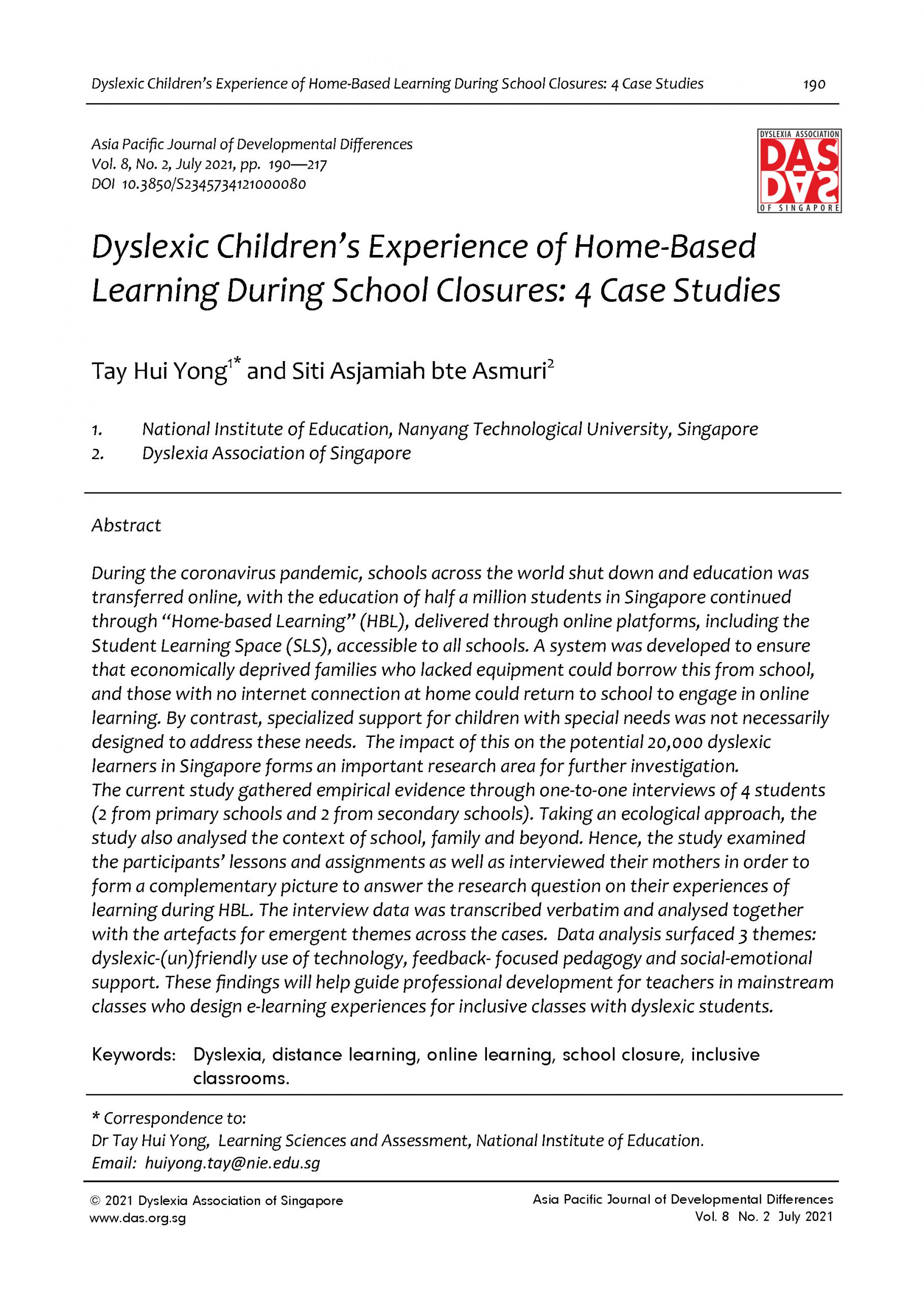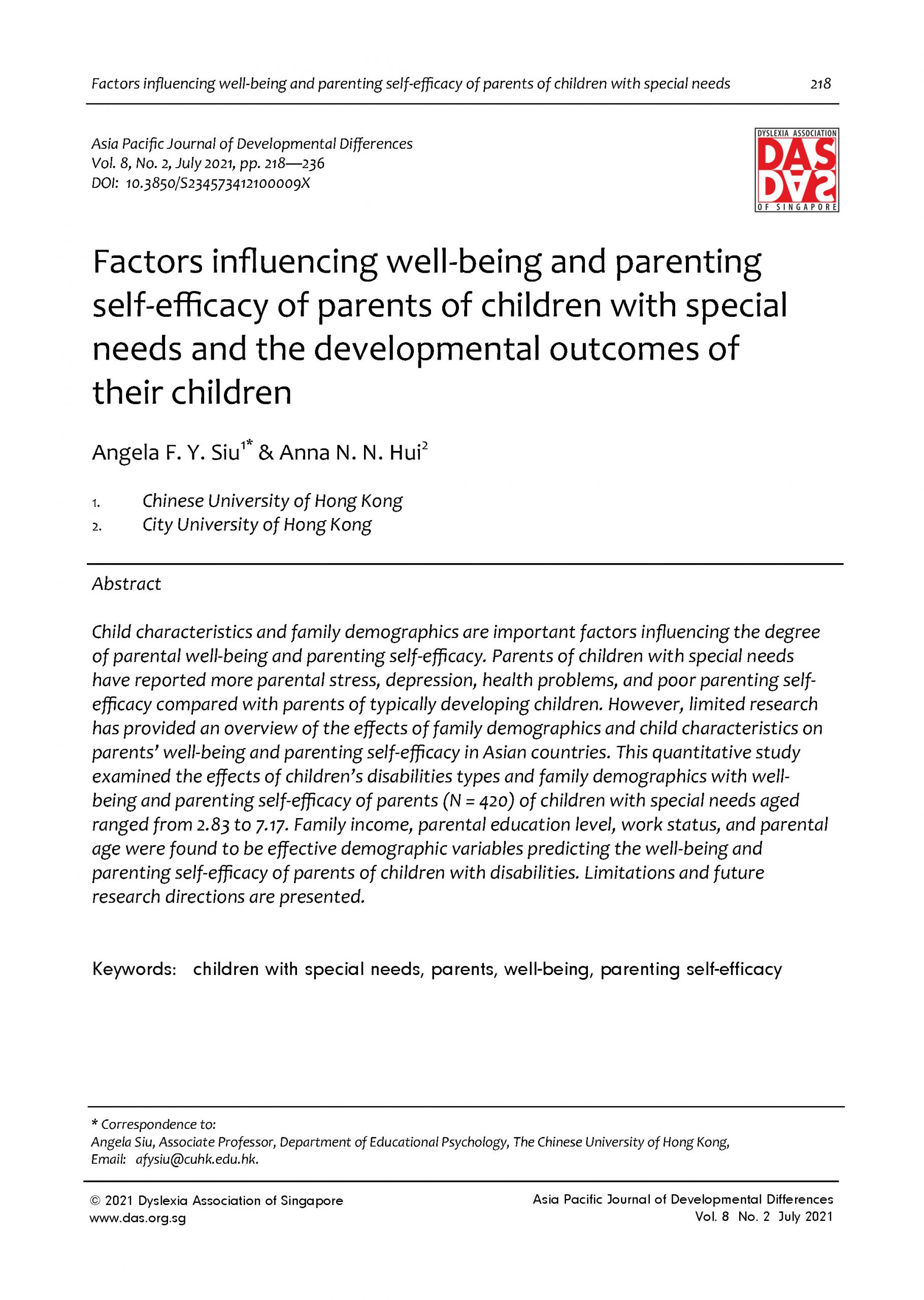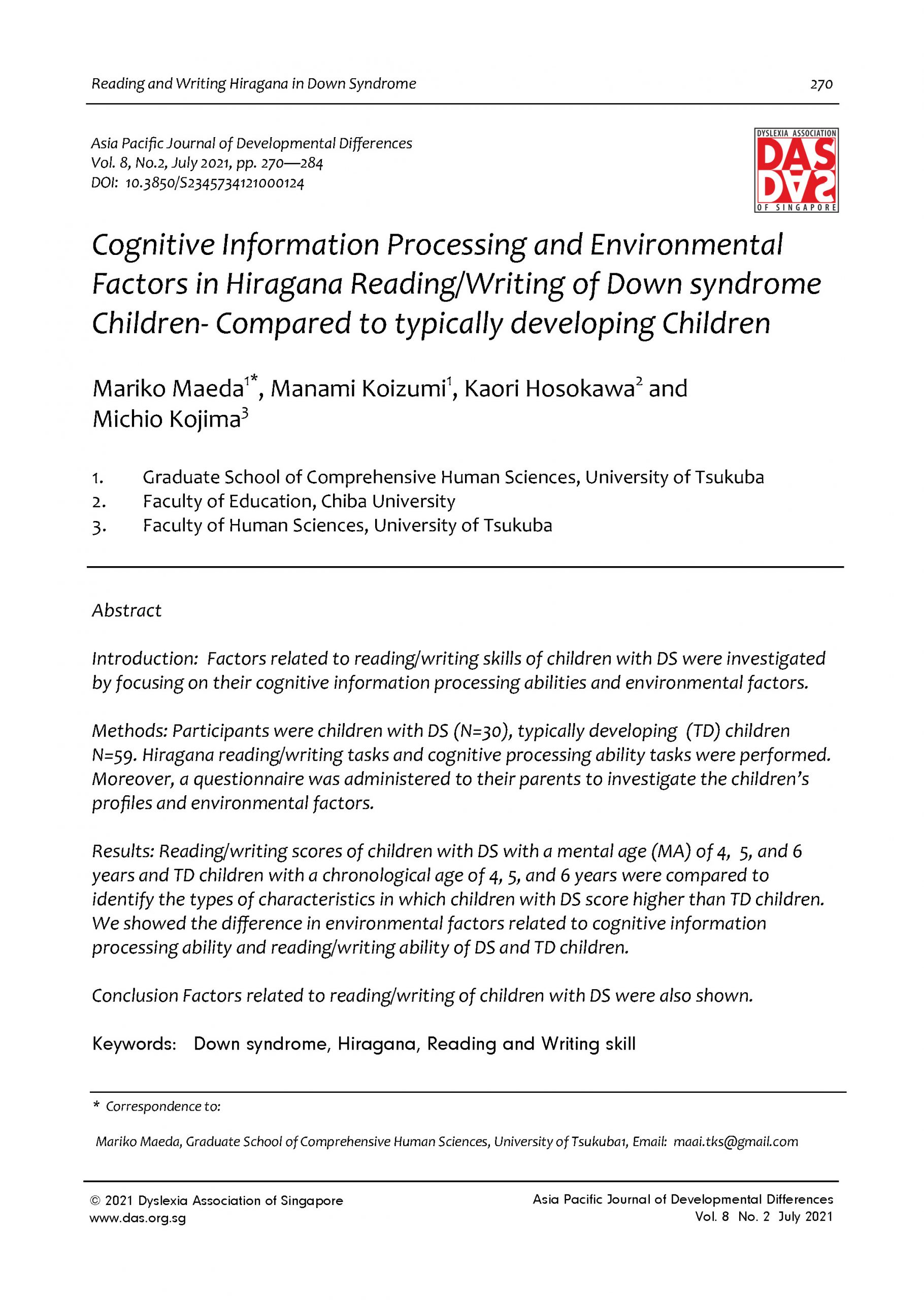6. Cognitive Information Processing and Environmental Factors in Hiragana Reading/Writing of Down syndrome Children- Compared to typically developing Children
Mariko Maeda1*, Manami Koizumi1, Kaori Hosokawa2 and Michio Kojima3
1. Graduate School of Comprehensive Human Sciences, University of Tsukuba
2. Faculty of Education, Chiba University
3. Faculty of Human Sciences, University of Tsukuba
Abstract
Introduction: Factors related to reading/writing skills of children with DS were investigated by focusing on their cognitive information processing abilities and environmental factors.
Methods: Participants were children with DS (N=30), typically developing (TD) children N=59. Hiragana reading/writing tasks and cognitive processing ability tasks were performed. Moreover, a questionnaire was administered to their parents to investigate the children’s profiles and environmental factors.
Results: Reading/writing scores of children with DS with a mental age (MA) of 4, 5, and 6 years and TD children with a chronological age of 4, 5, and 6 years were compared to identify the types of characteristics in which children with DS score higher than TD children. We showed the difference in environmental factors related to cognitive information processing ability and reading/writing ability of DS and TD children.
Conclusion Factors related to reading/writing of children with DS were also shown.
Keywords: Down syndrome, Hiragana, Reading and Writing skill











